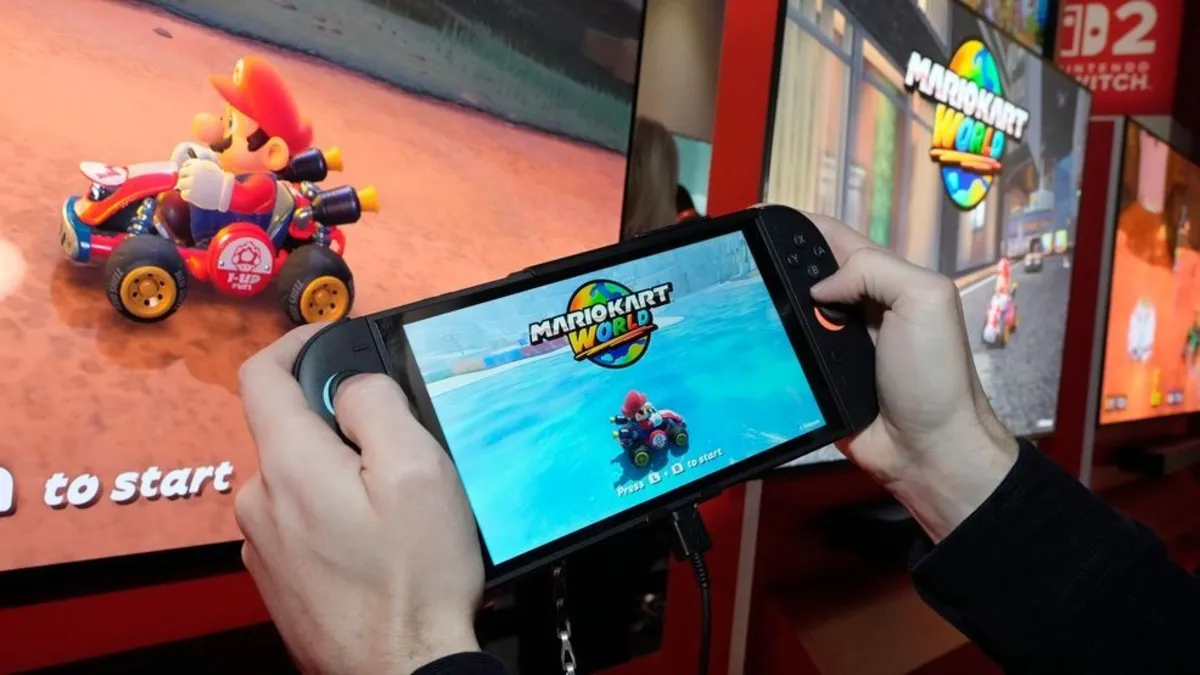
This week, video game giant Nintendo officially showcased the highly anticipated Switch 2, the successor to their immensely popular Nintendo Switch. Launched in 2017, the original Switch saw a meteoric rise in popularity during the COVID-19 pandemic, amassing over 100 million units sold by the end of 2024. The presentation for the Switch 2 was aired at 9 a.m. on Wednesday, and my teenage son and I made a conscious effort to avoid online spoilers, eagerly sitting down to watch it that evening.
We were genuinely impressed by the significant upgrades featured in the Switch 2. Key enhancements included a larger screen size, improved screen resolution, and HDR (High Dynamic Range) capabilities, which promise a more vibrant gaming experience. The refresh rate capabilities and increased storage space were also noteworthy. One of the standout features is the new audio chat and video camera functionality designed to foster more interactive group gaming experiences among friends.
The presentation also unveiled a lineup of exciting new titles for the Switch 2. Among the most thrilling announcements were “Mario Kart World”, “Donkey Kong Bananza”, and “Hyrule Warriors: Age of Imprisonment”. Additionally, Nintendo confirmed Switch 2 versions of popular titles like “Elden Ring”, “Split Fiction”, and “Deltarune”—a treasure trove for fans of the franchise.
However, as the presentation concluded and I delved into online updates, I was taken aback by the pricing associated with the new system. The base model will retail for $449.99, exceeding many expectations, including my own estimate of $399.99. A bundle that includes “Mario Kart World” is set to retail for $499.99. The digital download for “Mario Kart World” will be priced at $79.99, while a physical copy will reportedly cost $89.99—a notable surprise from a company known for its family-friendly image.
Historically, video game prices have steadily increased over the generations. In the 1980s and 1990s, titles for the original Nintendo Entertainment System ranged from $30 to $45. Fast forward to today, and the price of new titles for platforms like the PlayStation 5 and XBox Series X has reached $70. In 2023, Nintendo released its first $70 game, but now prices have escalated even further to $80 and $90 for certain titles. As a casual gamer, I found it hard to digest this new reality, while the parent in me was equally incredulous.
As video game production costs have soared, the reasons behind Nintendo’s pricing strategy become clearer. For instance, the budget for my favorite modern game, “The Last of Us Part II”, exceeded $220 million. Tariffs also play a significant role; recently, tariffs affecting the gaming industry have impacted production costs. Notably, Nintendo has shifted much of its console production from China to Vietnam—an area significantly affected by recent tariff changes.
Ultimately, one of the simplest reasons for Nintendo’s price increase is that they can. With the Switch 2 set to launch in June, it's expected to be in high demand, making it challenging to find despite Nintendo's efforts to deter scalpers. In an era of inflation and rising costs, the Nintendo Switch 2 is poised to be a blockbuster release, setting a new pricing benchmark in the gaming industry.
While not every Nintendo Switch 2 game will carry the hefty price tag of “Mario Kart World”, the new pricing landscape is undeniable. With Grand Theft Auto 6 anticipated to release this year and speculation surrounding its potential pricing, the gaming community is watching closely. I advised my son to start saving his money, and I’m following suit as we prepare for this new chapter in gaming.